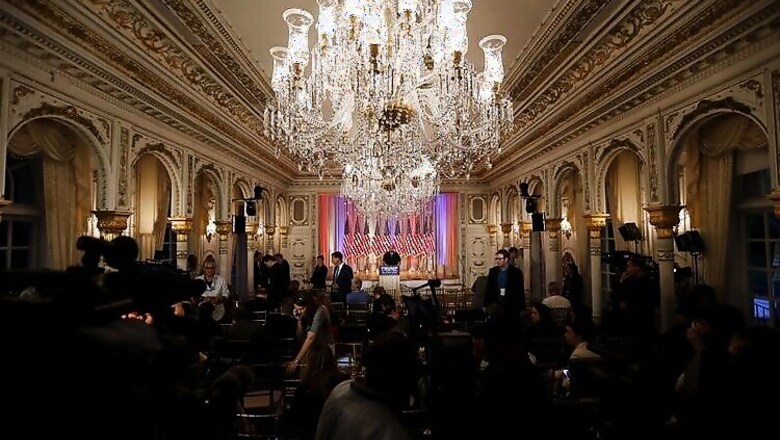
views
The nominating contests that will determine the Democratic and Republican nominees for the November 8 US presidential election are about to enter a critical phase. On March 1, known as Super Tuesday, primaries or caucuses are being held in about a dozen states, and they could be turning points in both parties.
But the key to winning the nomination for each party is ultimately not about the popular vote. It is about securing the number of delegates needed to win the nomination at each party's convention - July 18-21 in Cleveland for the Republicans and July 25-28 in Philadelphia for the Democrats.
Like so many things in politics, there are twists and turns in how the popular vote is used to select each party's candidate.
The following is a guide to the nominating process:
Q: Is the delegate selection process the same for the Republican and Democratic parties?
A: No. The parties set their own rules. One thing that is the same is that at each party convention, a candidate needs to reach only a simple majority of the delegate votes to win the nomination.
Q: How many delegates are there?
A: The Democratic convention will be attended by about 4,763 delegates, with 2,382 delegates needed to win the nomination. The Republican convention will be attended by 2,472 delegates, with 1,237 delegates needed to win.
Q: I keep hearing about "superdelegates." Are they different from other delegates? Do both the Republicans and Democrats have superdelegates?
A: Superdelegates, officially known as unpledged delegates, are a sort of wild card in the nominating process, but only the Democrats have them.
The category was created for the 1984 Democratic convention, and according to political scientists, they are a legacy of the 1980 convention when there was a fight for the nomination between President Jimmy Carter, who was seeking a second term in the White House, and Senator Edward Kennedy of Massachusetts. Members of Congress were frustrated by their lack of influence, because delegates elected to support one candidate could not switch to support another. So Democratic members of the House of Representatives led an effort to win a role for themselves. That resulted in the creation of superdelegates. Unlike other delegates, superdelegates may change what candidate they are supporting right up to the convention.
There is no fixed number of superdelegates because the group is defined by various categories whose members change from one election cycle to another. Here is who gets to be a superdelegate:
All Democratic members of the House of Representatives and the Senate; the Democratic governors; the Democratic president and vice president of the United States; former Democratic presidents and vice presidents; former Democratic leaders of the US Senate; former Democratic speakers of the House and former Democratic minority leaders. Throw in the members of the Democratic National Committee and the former chairs of the DNC and you finally have the whole pool of superdelegates.
Q: What about the other delegates? Do they get to choose which candidate to support?
A: Both the Democratic and Republican parties send delegates to their conventions based on the popular vote in the primary elections and caucuses held in each of the 50 states. But the parties have different rules on how delegates are allotted to a candidate.
The Democratic Party applies uniform rules to all states. In each state, delegates are allocated in proportion to the percentage of the primary or caucus vote in each district. But a candidate must win at least 15 percent of the vote to be allocated any delegates.
The Republican Party lets states determine their own rules, although it does dictate some things. Some states award delegates proportionate to the popular vote, although most such states have a minimum percentage that a candidate must reach to win any delegates. Some other states use the winner-take-all method, in which the candidate with the highest percentage of the popular vote is awarded all the delegates. Other states use a combination of the two methods.
States that use the proportionate method may instead use the winner-take-all method if one candidate wins more than 50 percent of the popular vote.
In addition, the Republican Party requires that all states with nominating contests held between March 1 and March 14 use the proportional method, meaning that all the states holding votes on Super Tuesday will have to award delegates proportionally.
Q: What happens to delegates if a candidate drops out of the race?
A: Another good question, because we have certainly seen that happen this year.
For the Democratic Party, in every state, delegates are reallocated to the remaining candidates.
For the Republican Party, it varies by state. In some states, delegates are required to stick with their original candidate at least through the first ballot at the Republican National Convention. In some other states, if a candidate drops out, his or her delegates may immediately pledge to another candidate. There is also a middle ground in which those delegates are reallocated to the remaining candidates.

















Comments
0 comment